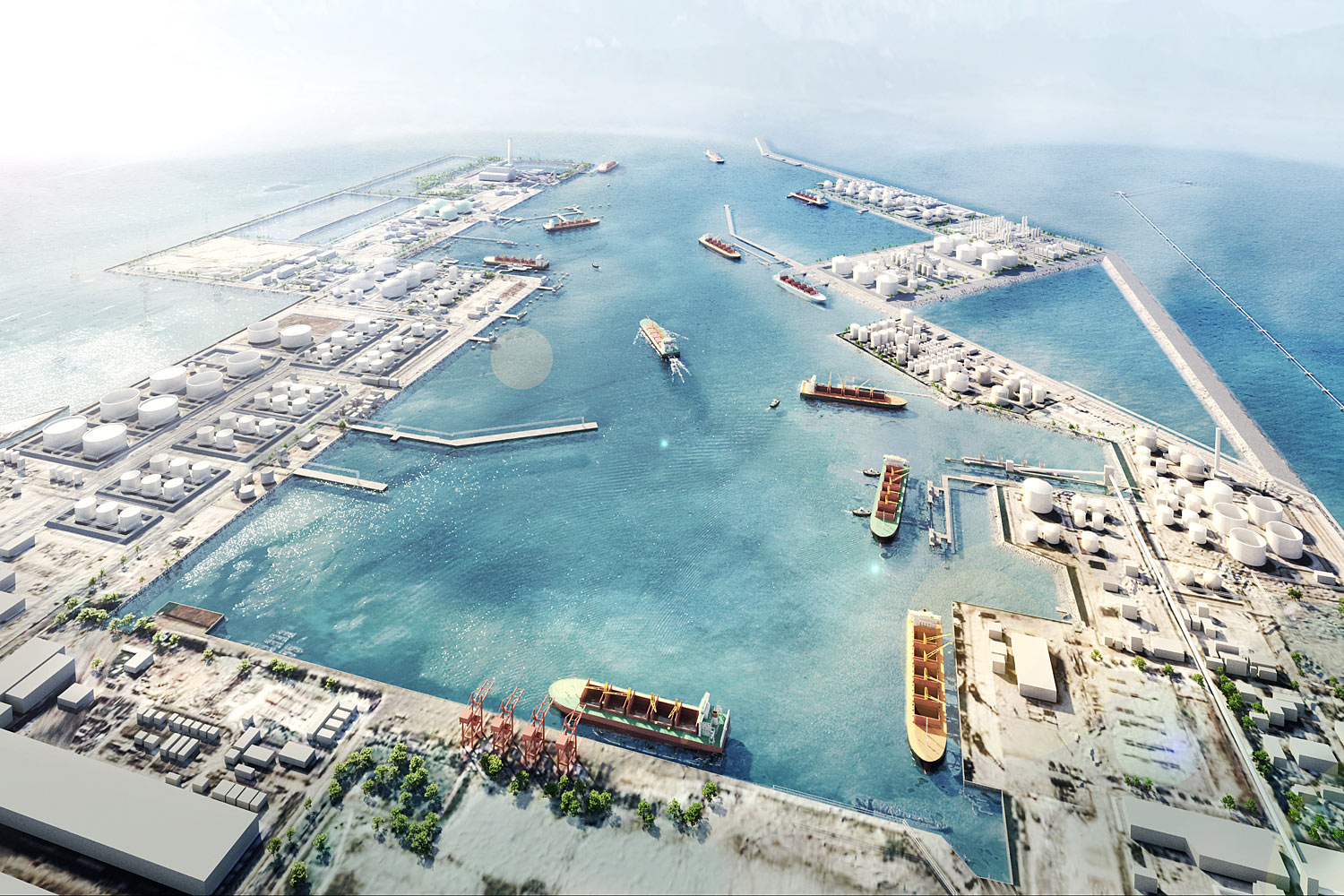An ambitious push to deepen economic ties with South Korea is shaping Thailand’s investment landscape, with formal discussions centered on a dedicated complex for South Korean entrepreneurs within the Eastern Economic Corridor. The proposals come as the Industrial Estate Authority of Thailand (IEAT) engages in high-level talks with South Korean authorities and representatives from the Thai Industrial Estate and Strategic Partner Association. At the heart of the conversation is a strategy to channel Korean capital and technology into Thailand’s growing high-tech industrial ecosystem, leveraging existing estates and potentially creating a specialized zone optimized for SK-driven operations. Government officials emphasize a welcoming stance toward foreign investors, with Sumet Thangprasert, the IEAT governor, underscoring that the government supports all foreign investors who choose to invest in Thailand, explicitly noting South Korea as a key target market. The message from the Thai side aligns with Korean business leaders’ preferences for a tailor-made industrial environment that can accelerate the deployment of advanced manufacturing, electronics, and related services. As discussions progress, the emphasis remains on building infrastructure that can accommodate not only manufacturing but also R&D activities, logistics, and supply-chain integrations that are critical for Korea’s high-tech supply networks.
The Eastern Economic Corridor and the Vision for a South Korean Hub
The deliberations reflect a broader national strategy to capitalize on the Eastern Economic Corridor (EEC), a region spanning parts of Chon Buri, Rayong, and Chachoengsao provinces. The EEC is positioned as a high-tech industrial hub, with a strategic focus on 12 targeted S-curve industries. Among these industries are next-generation vehicles and smart electronics, which are central to the future-oriented growth agenda. The East Economic Corridor is underpinned by ambitions to attract cutting-edge manufacturing, research and development, and advanced services that can synergize with regional logistics and port assets. The concept of creating a dedicated complex for South Korean entrepreneurs within this corridor reflects a targeted approach to concentrate investment flows, talent, and technology in a zone designed to optimize cross-border collaboration, capital efficiency, and rapid scale-up of high-value production. The proposal aligns with Korea’s interests in leveraging Thailand’s manufacturing footprint and established industrial estates, including those within the IEAT network, to accelerate entry into Southeast Asia’s dynamic markets. This alignment envisions not merely new factories but integrated ecosystems where Korean firms can innovate, assemble, and distribute with enhanced regional reach.
Map Ta Phut and Thailand’s Expansive Industrial Estate Network
The IEAT currently administers a broad portfolio of industrial estates, numbering 68 estates across 16 Thai provinces, underscoring the agency’s expansive footprint in the nation’s industrial geography. Among these is the Map Ta Phut industrial estate in Rayong, a key node within the country’s petrochemical and heavy manufacturing landscape. The existence of Map Ta Phut, coupled with the IEAT’s extensive estate network, provides a solid foundation for any proposal to concentrate foreign investment within a new complex focused on South Korean entrepreneurs. This setup allows for a well-established ecosystem in which suppliers, logistics providers, skilled labor pools, and advanced process industries can converge, reducing setup time and improving operational efficiency for Korean firms seeking a reliable, integrated platform in Thailand. The IEAT’s role as a steward of this estate network means that any expansion or new complex would benefit from a mature administrative framework, a tested regulatory environment for industrial development, and a track record of facilitating large-scale investments in the country’s manufacturing heartlands. The potential synergies between Map Ta Phut’s port-adjacent facilities, Rayong’s coastal logistics, and the EEC’s broader infrastructure investments create a compelling backdrop for a targeted South Korean complex aimed at accelerating manufacturing, electronics assembly, automotive components, and related activities.
Investment Roadshows, BoI Incentives, and Recent Investment Momentum
Thailand has actively promoted its investment opportunities to Korean companies through structured engagement efforts. Last year, Thai officials organized an investment roadshow in South Korea, inviting business leaders from across sectors to explore investment opportunities in Thailand. The roadshow brought together representatives from diverse industries, including electric vehicles, electronics, digital technology, renewable energy, bioscience, and pharmacy, signaling the breadth of Thai opportunities beyond a single sector. This outreach complements ongoing formal channels that facilitate foreign investment, underscoring a multi-faceted approach to attracting Korean capital and technology. From January to March this year, South Korean firms submitted seven investment projects worth 1.2 billion baht to the Board of Investment (BoI) to apply for investment incentives. The projects span electrical appliances, machinery and parts, and cars, illustrating the range of SK commitments and the appetite for Thai incentives and market access. The BoI’s involvement in approving these projects signals Thailand’s readiness to align policy incentives with investor expectations, ensuring that Korean firms can access favorable regulatory and financial terms to support their expansion plans in the Thai market. These developments highlight a steady cadence of engagement and a pipeline of proposals that could reinforce Thailand’s appeal as a regional hub for high-tech manufacturing and automotive-related sectors.
South Korea–Thailand Trade and Investment: A Growing Relationship
South Korea has established itself as a significant trading partner for Thailand, ranking as the 13th-largest trading partner. The bilateral trade between the two nations reached US$15 billion in 2024, reflecting a robust and diversified exchange across goods, services, and technology-intensive products. The period from 2020 to 2024 saw a notable level of activity in which Korean firms pursued BoI investment incentive packages, submitting 141 investment projects with a total value of 63 billion baht. This surge in investment activity is indicative of a broader confidence in Thailand’s investment climate, its industrial estates, and the ability to secure incentive programs that can bolster competitiveness. Within this dynamic, large South Korean companies have established a substantial presence in Thailand. Samsung stands out as a premier example, with an investment value of 31 billion baht in the country. Samsung Electronics, a subsidiary revered for its production of smartphones and home appliances, illustrates the scale and strategic significance of Korean investment, contributing to Thailand’s role as a manufacturing and innovation hub in the region. The combination of trade strength and investment momentum from South Korea reinforces the importance of ongoing collaboration through IEAT, BoI incentives, and industrial policy aimed at fostering high-tech manufacturing and supply-chain integration.
Implications for Thailand’s High-Tech Ambitions and Industrial Strategy
The push for a dedicated South Korean complex within the EEC carries substantial implications for Thailand’s long-term industrial strategy and high-tech ambitions. If realized, the complex could serve as a catalyst for accelerating technology transfer, local value creation, and the development of specialized capabilities in key sectors such as next-generation vehicles and smart electronics. The integration of SK-driven operations with the EEC’s high-tech framework could enable synergistic partnerships between Korean electronics, automotive suppliers, and Thai manufacturers, potentially enhancing supply chain resilience and regional competitiveness. The Map Ta Phut corridor and Rayong’s port facilities could provide critical logistics advantages, enabling efficient movement of components, raw materials, and finished goods across Southeast Asia. The creation of a dedicated complex would also send a strong signal to international investors about Thailand’s commitment to fostering targeted, sector-focused ecosystems that combine policy support, industrial estate infrastructure, and strategic geographic advantages. The broader narrative emphasizes a collaborative approach to investment, where government agencies, foreign authorities, and private sector associations align to promote sustainable growth, job creation, and the transfer of advanced manufacturing know-how in line with Thailand’s EEC priorities and S-curve industry targets.
Policy Environment, Incentives, and Infrastructure Considerations
The policy environment surrounding foreign investment in Thailand is shaped by a combination of national strategies and incentive mechanisms designed to attract and retain high-quality investment. The BoI plays a central role in evaluating and granting investment incentives to eligible projects, with appetites for sectors aligned with the nation’s development priorities. The recent increase in SK investment projects to 141 through 2020–2024 signals ongoing confidence in the BoI framework and the ability of Thai authorities to address investor needs through incentive programs, including tax and non-tax benefits, streamlined approvals, and access to key industrial estates. The proposal for a dedicated South Korean complex within the EEC implies careful consideration of zoning, infrastructure provisioning, and cross-agency coordination to ensure that the estate’s capacity, utility supply, and regulatory environment can accommodate high-density, technologically intensive activities. Infrastructure considerations would encompass not only physical facilities but also digital infrastructure, energy supply, water management, and environmental safeguards that align with modern manufacturing standards. The anticipated collaboration between IEAT, Thai industrial estate developers, and South Korean authorities would likely focus on creating a cohesive ecosystem where facility design, supply chain integration, and workforce development are optimized to maximize productivity and reduce time to value for Korean investors.
Industry Focus: S-Curve Technologies and the Evolving Thai Manufacturing Landscape
Thailand’s high-tech vision includes the concentration of effort on S-curve industries, particularly those associated with next-generation vehicles and smart electronics. The EEC’s emphasis on 12 targeted sectors indicates a deliberate prioritization of industries with strong potential for growth, innovation, and regional leadership. The proposed South Korean complex could serve as a gateway for Korean expertise in smart manufacturing, semiconductor-related activities, and other advanced technology domains to establish a robust presence in Thailand. The combination of Thailand’s established manufacturing base, a responsive regulatory framework, and Korea’s prowess in electronics, automotive components, and consumer devices could yield a powerful platform for joint ventures, technology transfer, and a broader regional footprint. Beyond the immediate financial investments, such a development would contribute to the diffusion of advanced manufacturing practices, upskilling of the Thai workforce, and the creation of a more integrated regional supply chain applicable across Southeast Asia. This aligned focus on high-impact sectors helps ensure that investments translate into durable competitive advantages, both for Thai industry and for Korean firms seeking a resilient foothold in Asia’s dynamic markets.
A Broader Perspective: Economic Partnerships, Jobs, and Market Access
The ongoing dialogue between Thailand and South Korea reflects a broader trend in Asia’s economic landscape, where bilateral partnerships extend beyond simple capital inflows to include technology sharing, research collaboration, and the creation of specialized zones that accelerate innovation cycles. For Thailand, attracting SK investment translates into job creation, skill development, and the diffusion of best practices in advanced manufacturing and electronics assembly. For South Korea, a well-structured foothold in Thailand provides access to regional markets, diversification of production networks, and opportunities to optimize supply chains facing global disruptions. The presence of notable players such as Samsung underscores the potential scale and impact of Korean investment in the Thai economy, particularly in sectors critical to consumer electronics, home appliances, and related components. The ongoing exchange among IEAT officials, SK authorities, and Thai industry associations signals a shared commitment to cultivating a robust, mutually beneficial ecosystem that can withstand fluctuations in global demand while driving technological progress and economic development within Thailand’s strategic provinces and ports.
Operational Timelines, Risk Management, and Next Steps
As the discussions progress, stakeholders will likely evaluate timelines for establishing a dedicated complex, the required infrastructure investments, and the regulatory steps necessary to secure approvals and incentives. A phased approach could be envisioned, with initial pilots or pilot estates focusing on core industries, followed by scale-up phases that expand capacity and diversify the tenant mix. Risk management considerations may include supply chain resilience, environmental impact assessments, labor market readiness, and the alignment of industrial estate governance with both Thai policies and Korean partners’ governance expectations. The next steps would plausibly involve formalizing agreements between IEAT, private estate developers, and Korean authorities, clarifying investment timelines, and negotiating incentive packages appropriate for the scale and nature of the projects. The emphasis on a high-tech, high-value ecosystem within the EEC indicates a strategic intent to position Thailand as a premier destination for advanced manufacturing and technology-driven industries in Southeast Asia, reinforcing the nation’s role in regional production networks and supporting long-term economic growth.
Conclusion
Thailand is actively positioning itself to attract intensified South Korean investment, with meaningful discussions about a new complex dedicated to South Korean entrepreneurs within the Eastern Economic Corridor. The IEAT’s engagement with Korean authorities and the Thai Industrial Estate and Strategic Partner Association demonstrates a coordinated effort to expand investment channels, accelerate technology transfer, and bolster Thailand’s high-tech manufacturing capabilities. The plan aligns with the EEC’s ambition to become a high-tech hub housing 12 targeted S-curve industries, including next-generation vehicles and smart electronics, while leveraging Map Ta Phut and the IEAT’s extensive estate network. The combination of roadshows in South Korea, BoI incentive activity, and a growing portfolio of SK investment projects highlights a robust and growing economic partnership with Korea. Samsung’s significant investment and Samsung Electronics’ prominence in Thailand illustrate the scale and strategic importance of South Korean involvement in the Thai economy. As talks advance, the shared objective remains to create an integrated, efficient, and attractive environment that enables Korean firms to invest, innovate, and grow in Thailand, contributing to job creation, technology advancement, and regional economic resilience. The collaboration embodies Thailand’s commitment to a proactive investment climate and to building a landscape where foreign capital, technology, and local capabilities converge to sustain long-term prosperity.




